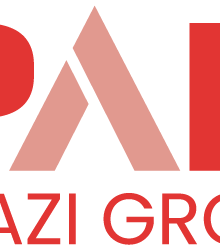Communication within the workplace has undergone a profound transformation with the emergence of presentation technology. This dynamic tool, utilizing both hardware and software, facilitates the creation and delivery of compelling presentations aimed at effectively engaging audiences. Its significance lies in its capacity to bolster collaboration, communication efficiency, time and cost savings, and streamlined staff training. By delving into the realm of presentation technology, this article endeavors to shed light on its pivotal role in the contemporary workplace.
Over the years, the evolution of presentation technology has revolutionized communication methods in office settings. The era of monotonous and constrained communication avenues has given way to indispensable technology and specialized software tailored for creating, designing, and delivering presentations attuned to specific audiences. While the introduction of overhead projectors in the 1960s marked the initial entry into this domain, the subsequent advancements in presentation technology have been rapid and transformative.
Today, an array of devices such as digital projectors, interactive whiteboards, and augmented reality tools have become integral components of the presentation technology landscape. These cutting-edge solutions empower professionals to deliver impactful presentations that captivate and engage their audience, facilitating effective information dissemination and knowledge transfer within organizations.
The Importance of Presentation Technology in the Workplace
In the modern workplace, presentation technology has emerged as a critical tool for effective communication and engagement. It empowers businesses to convey messages more effectively to employees, clients, and stakeholders, fostering productivity, collaboration, and improved overall communication.
Delivering Information Visually and Engagingly
Presentation technology enables businesses to deliver information visually, compellingly, and engagingly. By incorporating dynamic elements such as multimedia, graphics, and animations, presenters can captivate their audience and convey complex concepts and ideas effectively.
Invaluable Tool for Training and Development
Presentation technology serves as an invaluable tool for organizational training and development initiatives. It facilitates the creation of interactive and immersive training sessions that can be delivered to employees across various locations, eliminating the need for extensive travel expenses while ensuring consistent and standardized training experiences.
Promoting Collaboration and Knowledge Sharing
Interactive features and real-time collaboration tools embedded within presentation technology promote collaboration and knowledge sharing within teams and departments. This fosters a culture of teamwork, encourages diverse perspectives, and enhances problem-solving capabilities within the workplace.
Various Presentation Technology Types and Their Uses in the Workplace
In the modern workplace, several types of presentation technology enhance communication, collaboration, and engagement. Digital projectors, interactive whiteboards, and augmented reality are commonly used technologies, each offering unique benefits and applications.
Digital Projectors
Digital projectors display visual content on a large screen or surface, facilitating presentations, video conferencing, and training sessions in meeting rooms, conference halls, and classrooms.
Interactive Whiteboards
Interactive whiteboards combine a display surface with touch-sensitive technology, enabling users to interact with digital content directly on the board. They are utilized for collaborative meetings, presentations, and interactive training sessions.
Augmented Reality (AR)
Augmented reality integrates digital information into the real-world environment, offering applications such as product demonstrations, remote collaboration, and immersive training experiences.
These technologies play a vital role in improving communication, collaboration, and learning experiences in the workplace, with specific applications tailored to the industry, organization, and user requirements.
How Presentation Technology Helps in the Workplace
Presentation technology contributes to enhancing communication, collaboration, and overall productivity in the workplace through several key mechanisms:
Engaging and Effective Presentations
Presentation technology enables the creation of engaging and visually appealing presentations, capturing the audience’s attention and conveying information effectively.
Improved Communication
By simplifying and organizing complex ideas and data, presentation technology enhances communication, ensuring that the message is effectively conveyed and understood.
Enhanced Collaboration
Presentation technology facilitates collaboration among team members, enabling real-time feedback and participation during presentations, fostering teamwork and creativity.
Remote Work and Virtual Meetings
In the era of remote work and virtual meetings, presentation technology enables effective communication and collaboration, regardless of geographical barriers.
Audience Engagement
Interactive features within presentation technology actively engage the audience during presentations, fostering participation and creating dynamic and memorable experiences.
Time and Cost Savings
Presentation technology eliminates the need for traditional presentation materials, resulting in significant time and cost savings for organizations.
Professionalism and Branding
By enabling the creation of visually appealing and consistent presentations, presentation technology enhances professionalism and reinforces the organization’s branding.
Data Analysis and Visualization
Presentation technology facilitates data analysis and visualization, enabling organizations to present complex data sets in a visually appealing and understandable format, aiding in decision-making and reporting.
Challenges of Using Presentation Technology in the Workplace
While presentation technology offers numerous benefits, it also presents challenges that organizations must address:
Technical Difficulties
Technical issues such as equipment breakdowns and compatibility issues can disrupt presentations, frustrating both presenters and audiences.
Learning Curve
The adoption of cutting-edge presentation tools requires employees to adapt to new technologies continually, which can be challenging for those who are not tech-savvy.
Information Overload
Excessive use of presentation technology may lead to information overload, overwhelming the audience and hindering engagement.
Conclusion
Presentation technology has become indispensable in the modern workplace, revolutionizing communication, collaboration, and training. While it offers numerous benefits, organizations must address challenges such as technical difficulties, the learning curve, and information overload to harness its full potential effectively. By doing so, businesses can leverage presentation technology to enhance communication, collaboration, and training, driving productivity and success in the workplace.

